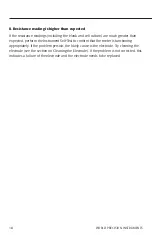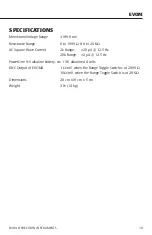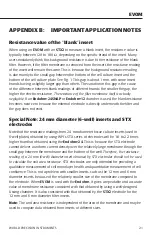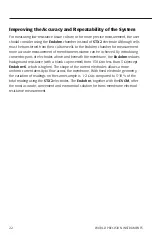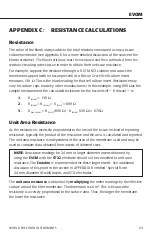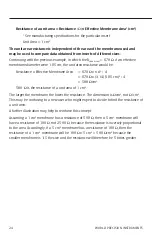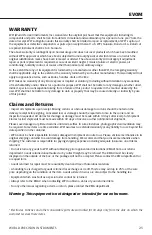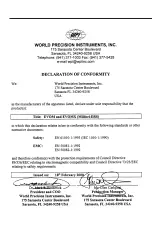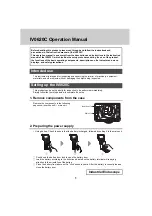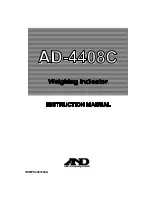
EVOM
TROUBLESHOOTING
EVOM Meter
Experience demonstrates that more than 90% of the time, system problems are related
to the electrode not the meter itself. Of those failures due to the meter itself, at least half
of them are a result of a failed switch due to the presence of corrosion. The typical cause
of this corrosion is accidental spillage of saline solution or culture media on the meter.
If the meter has been kept free of salt solutions, the batteries are fresh and functional
testing of the meter demonstrates acceptable performance results (see the INSTRUMENT
SELF-TEST section of this manual), then the meter is working correctly.
STX2 Electrode
• Although the
STX2
electrode has a warranty of 30 days, its useful lifetime is typically
1 to 2 years, depending on usage.
• When the electrodes fail, the most common symptom is an unstable or unusually
high reading. If the current electrode fails, the meter will emit a warning beep.
• When the meter displays a lower than expected resistance, but is stable and
reproducible, the most likely cause is related to the cell culture, not the electrode or
meter.
•
In situ
tests — There is no quantitative method available to do an
in situ
or wet test on
the electrode. However, two qualitative methods may assist the user in determining
that the electrode is working and will respond to an increase in resistance:
1.
Use WPI’s
CaliCell
to test the electrode.
CaliCell
is a cell culture insert with a
synthetic membrane that mimics a confluent epithelial membrane’s resistance in
fluid. Each
CaliCell
insert is supplied with an established resistance measurement
determined at the time of manufacture and against which the system resistance
can be compared.
2.
Test the resistance differences between a well filled with electrolyte and a blank
culture insert filled with electrolyte. The resistance of electrolyte alone should be
less than 50 ohm and stable, if the electrode is kept stationary. The resistance of
the blank insert is normally in the 80 to 200
Ω
range, depending on the brand
and size.
NOTE:
During normal usage, it is helpful to write down the resistance range of each
particular type of blank insert with the specific culture media used. If the electrode is
subsequently suspected of having a problem, a comparison of current readings to past
readings on the same blank insert and culture media could assist in determining if the
electrode is functioning as expected.
WORLD PRECISION INSTRUMENTS 15


















